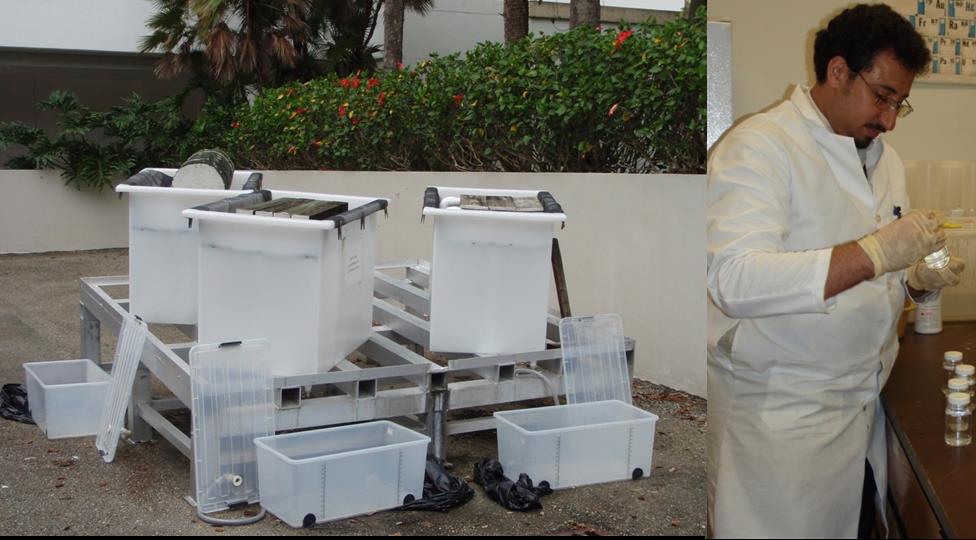Preservatives are added to wood to protect the wood from insect and fungal attack. Traditional waterborne based preservatives (use water as a carrier to transport the chemicals into the wood) utilize copper as the primary fungicide. Common waterborne preservatives include chromated copper arsenate (CCA), micronized copper quat (MCQ), and micronized copper azole (MCA). Although these chemicals are retained by the wood over many years, they do leach slowly over time which cumulatively can impact soil and water. Much of my work in this area has focused on evaluating the environmental impacts of waterborne wood preservatives in the environment.
The latest publications in this area are:
- Arsenic, copper, and chromium from treated wood products in the U.S. disposal sector
- Metals content of recycled construction and demolition wood before and after implementation of best management practices.
The latest project in this area is:
- Impacts of Treated Wood in the Florida Disposal Sector. Funded by the Hinkley Center for Solid and Hazardous Waste Management. This project resulted in a guidance document for sorting treated wood.
Please visit the following web sites to see listings of some of our past research projects.
- Research Sponsored by the Bill Hinkley Center for Solid and Hazardous Waste Management
- Leachability and Harmful Effects of Arsenic, Chromium, and Copper Associated with CCA-Treated Wood
- Florida Department of Environmental Protection Innovative Recycling Grants Program (Search Town of Medley or CCA)

Wood sorting technologies evaluated ran the gamut from chemical stains to X-ray Fluorescence Units. Right Dr. Brajesh Dubey and Gary Jacobi test a wood sample using a hand-held XRF unit. Bottom from left to right: Dr. Brajesh Dubey, Don Sackett owner of Innov-X, Dr. Timothy Townsend, Dr. Tomoyuki Shibata, Gary Jacobi, Felipe Behrens, Chris Zavatsky, Dr. Helena Solo-Gabriele, Monika (Kormienko) Blassino, and Amy Omae.

